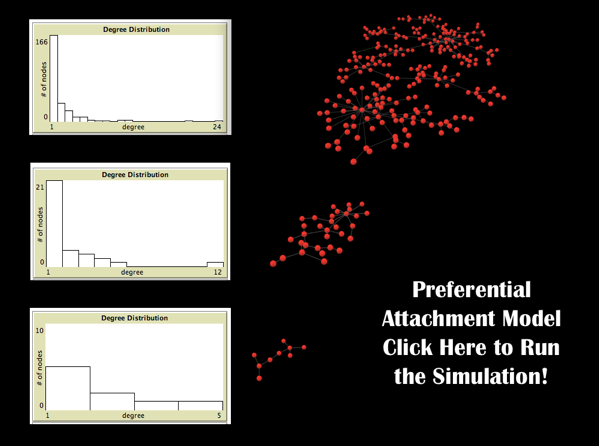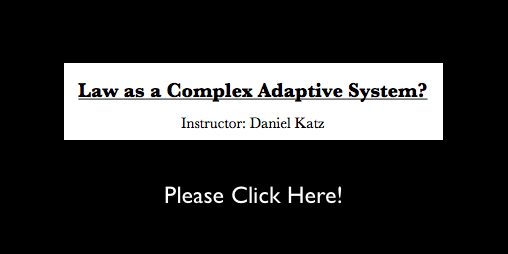The visual above is drawn from the Netlogo Simulation of preferential attachment. “In the model, a given node prefers to connect to other nodes that already display high indegree. As the number of connections a given agent displays is a function of the number the agent possessed in earlier time periods, the distribution of connections is highly susceptible to the initial starting conditions. For instance, consider a network that has four nodes A, B, C and D where A is connected to B and C is connected to D. If node E enters the network, assume the initial probability of attachment to the AB community is equal to that of the CD community. Once E connects to either the AB or CD community, subsequent entrants such as node F, G and beyond are more likely to connect with the community selected by E.” The model offers one of the generative processes responsible for creating a network with a power law distribution.
There are important differences between the abstract model as initially described in Albert-László Barabási & Reka Albert, Emergence of Scaling in Random Networks, 286 Science 509 (1999) and the dynamics of broader social world. While a number of extensions of the model have been authored in the period following the original article, what is striking is how much leverage on basic dynamics can be gleaned from the graph analog of a Yule process.
For purposes of positive legal theory consider the following passage … “In order to contextualize what a particular observed network structure implies, it is critical to remember that the social landscape need not take any particular form. Scaffolding could indeed assume a variety of flavors and there are causal mechanisms that act at the micro-level to produce the observed macro-architecture.” While such distributions have been documented in a variety of context relevant for positive legal theory, it is important to note this distribution of social authority is by no means a given. Specifically, as we described in Social Architecture, Judicial Peer Effects and the ‘Evolution’ of the Law: Toward a Positive Theory of Judicial Social Structure social systems can embrace a wide variety of architectures. Thus, we believe the documented tendency of common law and its constitutive systems to generate such highly skewed distributions is highly relevant.
In Part II of this post, we will highlight the current state of the relevant applied legal literature. This includes not only our work but also important studies by a wide number of other legal scholars. To preview, check out this post from a few days ago…





